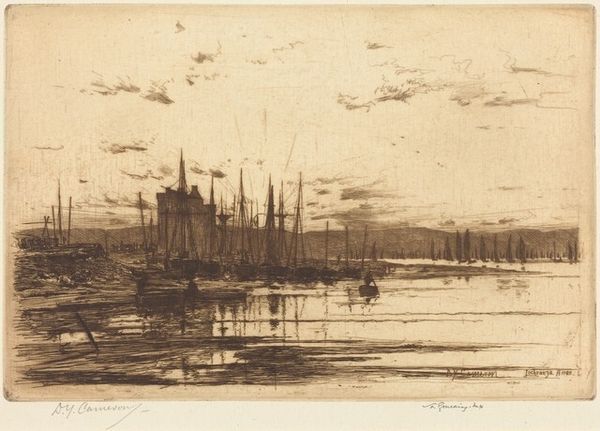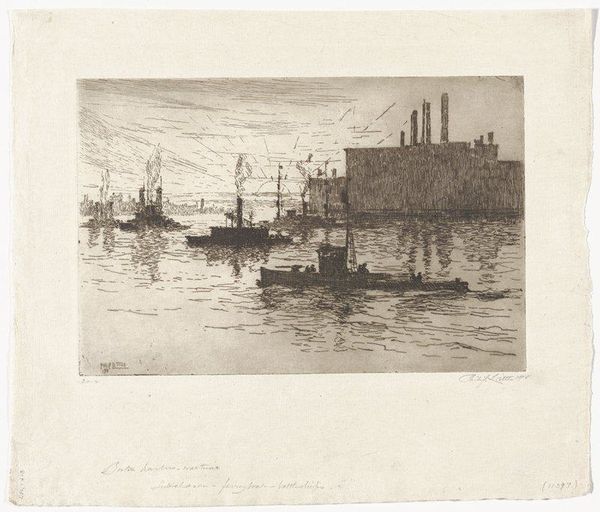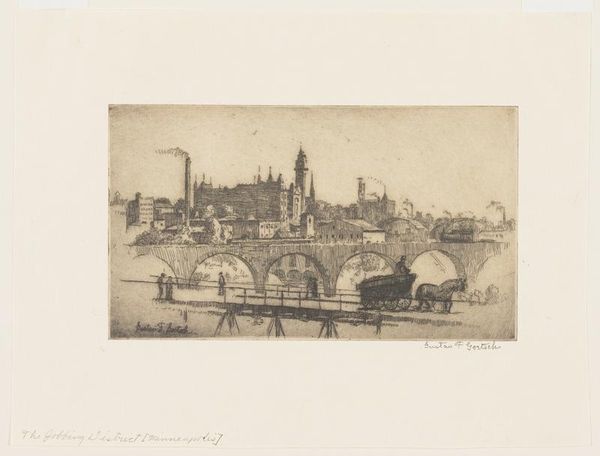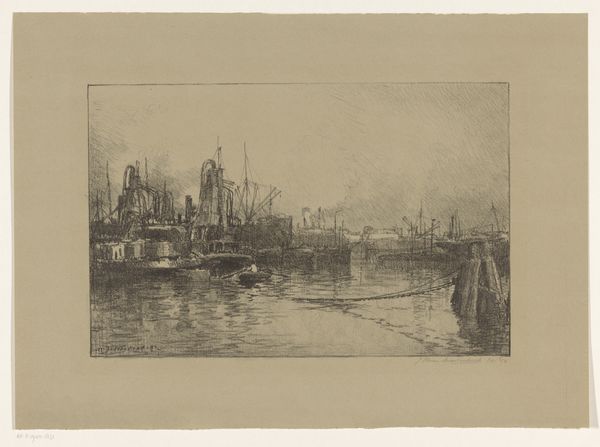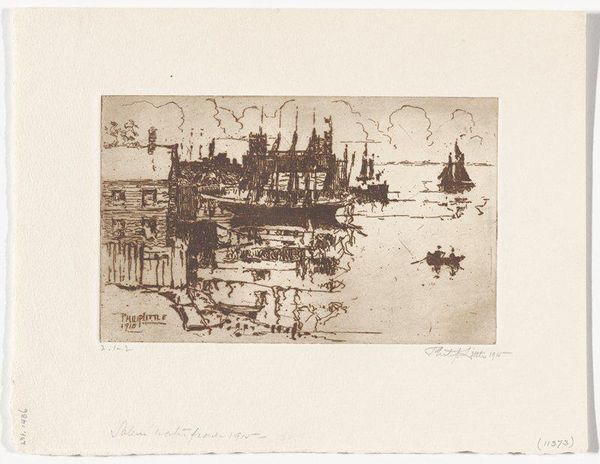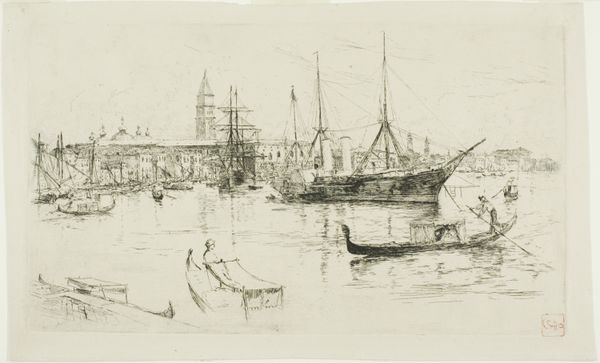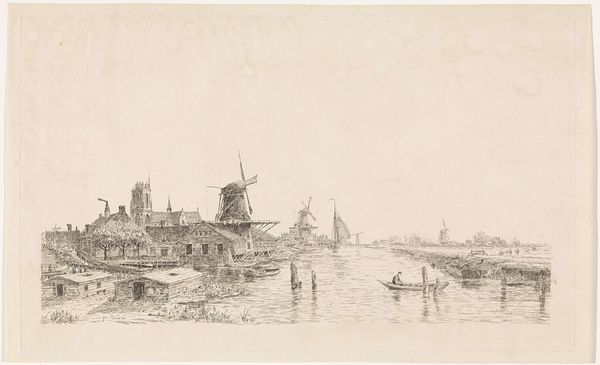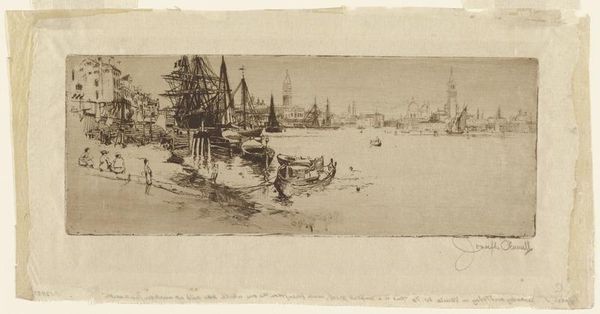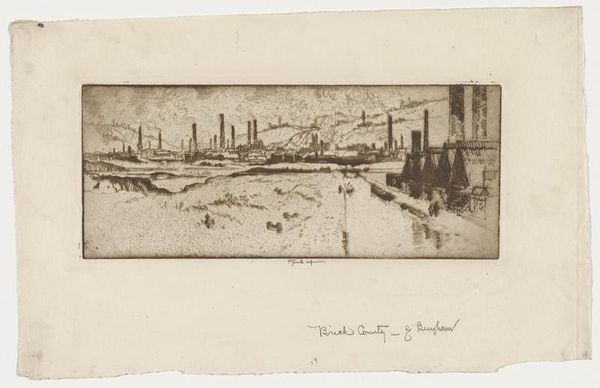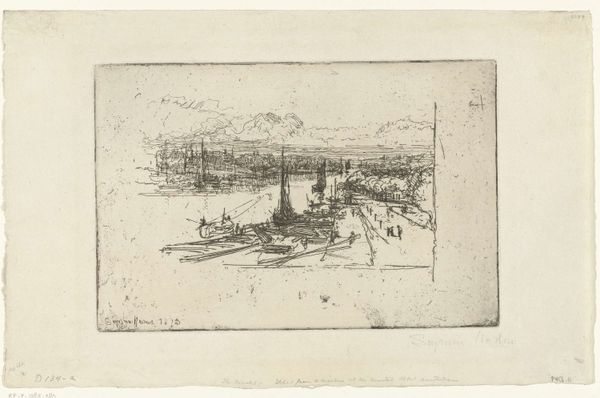
print, etching
# print
#
impressionism
#
etching
#
landscape
#
etching
#
cityscape
Copyright: National Gallery of Art: CC0 1.0
David Young Cameron's etching, *The Clyde at Govan*, depicts a bustling harbor filled with ships and industrial structures. The scene evokes a sense of progress, but also hints at the transient nature of human endeavor. Consider the ship, a recurring motif throughout art history, symbolizing journeys, exploration, and trade, but also carrying connotations of displacement and the unknown. The ship is the vehicle of commerce, but also the bearer of cultural exchange and potential conflict. We can trace its evolution from ancient Egyptian barques navigating the Nile to Viking longboats crossing treacherous seas. Its prominence in art shows the complex relationship between humanity and the natural world. Here, the clustered vessels exude the psychological weight of collective memory, stirring subconscious recognition of both opportunity and risk. These ships are not merely vessels, but symbols of human ambition. We see the cyclical progression of this symbol as it resurfaces, evolves, and takes on new meanings in different historical contexts.
Comments
No comments
Be the first to comment and join the conversation on the ultimate creative platform.

